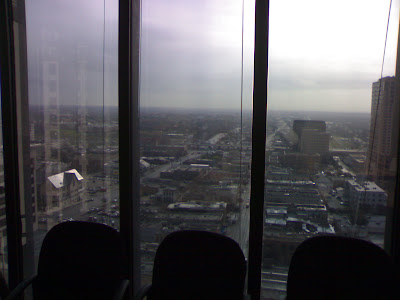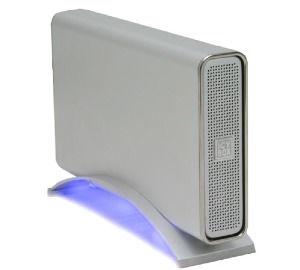Eddy Petrișor: Is Romania part of the European Union?
 This is a really slim and really incomplete description of the events turning really bad for Romania and severely bad for Moldavian civilians.
This is a really slim and really incomplete description of the events turning really bad for Romania and severely bad for Moldavian civilians.- Moldavia calls his ambassador from Romania
- the peaceful protests turn violent on Tuesday (while Voronion recognised for Ria Novostni that they allowed the protesters to control for a day the Presidential building and the Parliament (in Romanian)
- the Moldavian public is kept in the dark by the authorities: the national radio-television doesn't cover the events, the independent media is not allowed to report the events
- in the rural areas of Moldavia no other media is accessible except the national television which is controlled by the Communists
- Moldavian police men tear down a wall close by the Moldavian Parliament during the violent turn of the protest
- Moldavia accuses Romania without any proof of implication in the events in Moldavia
- The Romanian ambassador Filip Teodorescu, and the Counseling Minister of the Romanian Embassy in Moldova, Gabriel Gaboran, are declared persona non grata in Moldavia; Romania can't do the same since the Moldavian ambassador is not in the country
- Vladimir Voronin announces visas will be introduced for Romanians (an abussive measure since the EU should have been announced of such a measure with 48 hours in advance)
- Romanian authorities respond by:
- a ferm denial of the unproven accusations - from what I have seen CNN and Euronews simply don't accurately represent the declaration, and the texts put under quotes - the word "provocation" - imply that the Romanian position is not honest
- they declared that they will NOT declare the Moldavian ambassador as a persona non grata and that the regime of gratuitous visas for the Moldavian citizens will not change
- EU DOES NOT ANSWER AT ALL TO THIS ABUSE AGAINST EU CITIZENS
- Wednesday protests are quiet but media access is highly restricted and inaccurate information is aired through the national Moldavian Television
- Romanian journalists from Antena 3 were harassed, followed and, fearing for their safety, they appealed OSCE authorities in Moldavia to be able to leave the country safely
- Wednesday and Thursday many arrests occur in Moldavia and the Romanian officials requested the Moldavian officials to tell them if among the arrested people are any Romanian citizens; no answer was provided by the Moldavian authorities
- France, Sweden and Czehia
and some other EU membersdeclare that they "understand the complexity of the relationsensible issuebetween Romania and Moldavia" and appeal to Moldavia to rebound the diplomatic relation with Romania - WHAT? In Diplomatic lingo that seems to mean something like "we know Romanians are idiots, but please, Moldavian authorities, let's get back to dialogue" - Today, Friday 10, the Moldavians are called to protests and the authorities are authorized to use real ammunition
- Teachers, university administration personnel, opposition representatives announce that people should not attend the protests and measures will be taken against anyone allowing people (mostly youngsters) to attend the protests
- Russia declares that "the EU has a member state that hasn't clearly delimited its borders" which obviously refers to Romania, thus attacking Romania and alleging that Romania has unionist expansions; EU DOESN'T DO ANYTHING!
WHAT THE HELL IS EU DOING? Romania is a member of the EU and it seems all the attacks against Romania are not addressed in any way by the EU, on the contrary, EU members either assist passively, look the other way or even allow us to understand that indeed they think Romania is involved.
 The phrase "Total Fire Ban" is bandied around a lot these days -- mostly
on days with high temperatures, low humidity, and high winds. To me, it
isn't a particularly hard concept to understand, either: in the immortal
words of Metallica, "Fire bad, Aircon goood!".
And yet, some people just don't seem to get it. This afternoon, my
brigade got a page for a fire call to a reported "smoking log" behind
town. When we got to where the log was, indeed, smoking, it was obvious
that a group of people had had a large party around a bonfire last night.
Given the prevalence of large-scale fire incidents at the moment, anyone
who feels that lighting up a bonfire, cracking open a large quantity of
alcohol, and then leaving the damn fire going in the morning, is a good
idea, really needs to have their head examined.
In other firefighting-related news, despite being the on-call brigade for
our district this week, we've not been called to assist at any of the
fires currently burning both to our north and south. It's frustrating
that having been trained to fight bushfires, and with so many areas
currently needing some serious firefighting, my district isn't getting
asked to help out. On the other hand, they don't appear to be hurting for
resources at these fires (with several hundred RFS personnel, not to
mention NSWFB and NPWS people, at the Peats Ridge fire; also, some 200 RFS
personnel have been dispatched to Victoria), so it's good to know that
there's plenty of bush firefighting volunteers around if things get bad
around here.
The phrase "Total Fire Ban" is bandied around a lot these days -- mostly
on days with high temperatures, low humidity, and high winds. To me, it
isn't a particularly hard concept to understand, either: in the immortal
words of Metallica, "Fire bad, Aircon goood!".
And yet, some people just don't seem to get it. This afternoon, my
brigade got a page for a fire call to a reported "smoking log" behind
town. When we got to where the log was, indeed, smoking, it was obvious
that a group of people had had a large party around a bonfire last night.
Given the prevalence of large-scale fire incidents at the moment, anyone
who feels that lighting up a bonfire, cracking open a large quantity of
alcohol, and then leaving the damn fire going in the morning, is a good
idea, really needs to have their head examined.
In other firefighting-related news, despite being the on-call brigade for
our district this week, we've not been called to assist at any of the
fires currently burning both to our north and south. It's frustrating
that having been trained to fight bushfires, and with so many areas
currently needing some serious firefighting, my district isn't getting
asked to help out. On the other hand, they don't appear to be hurting for
resources at these fires (with several hundred RFS personnel, not to
mention NSWFB and NPWS people, at the Peats Ridge fire; also, some 200 RFS
personnel have been dispatched to Victoria), so it's good to know that
there's plenty of bush firefighting volunteers around if things get bad
around here.
 Happy solstice! High point of the season for me, and today was a two party
day. My sister has reached the point where a good b-day present for her is
merging the
Happy solstice! High point of the season for me, and today was a two party
day. My sister has reached the point where a good b-day present for her is
merging the 
 My workmate Pep was kind enough to drive me home back from work today.
Ideally I would have cycled home as always, however today my bike was stolen
again. It's not the
My workmate Pep was kind enough to drive me home back from work today.
Ideally I would have cycled home as always, however today my bike was stolen
again. It's not the
 Lev t t pour tre frais et dispo pour la premi re s ance, je me suis pr par rapidement. La nuit a t assez courte, couch vers minuit pour finaliser le support de cours. Enfin, il est pr t. J'ai juste quelques ajustements y apporter et il partira pour l'impression. Mieux vaut tard que jamais ;)
J' tais donc pr t 7h30 pour un petit d jeuner ma foi agr able au bord de la piscine et accompagn de
Lev t t pour tre frais et dispo pour la premi re s ance, je me suis pr par rapidement. La nuit a t assez courte, couch vers minuit pour finaliser le support de cours. Enfin, il est pr t. J'ai juste quelques ajustements y apporter et il partira pour l'impression. Mieux vaut tard que jamais ;)
J' tais donc pr t 7h30 pour un petit d jeuner ma foi agr able au bord de la piscine et accompagn de  I have never seem so many people at fisl. Seriously! All the rooms were crowded, all the time same as the expo and the user-group area. Our official counter were stopped at 6667 participants, but that is just because we ve taken the registration database off-line in order to process new registrations on-site. By the end of fisl all the numbers will be summed up, but I heard rumors of 7 thousand people! Awesome!
I spent this first day mostly in the
I have never seem so many people at fisl. Seriously! All the rooms were crowded, all the time same as the expo and the user-group area. Our official counter were stopped at 6667 participants, but that is just because we ve taken the registration database off-line in order to process new registrations on-site. By the end of fisl all the numbers will be summed up, but I heard rumors of 7 thousand people! Awesome!
I spent this first day mostly in the 
 And, since I was not available in the morning, when the huge crowd was arriving, I took a picture of a picture taken by Marlon of this initial moments:
And, since I was not available in the morning, when the huge crowd was arriving, I took a picture of a picture taken by Marlon of this initial moments:
 (It is not really clear in this picture, but beyond the red gates there were as many people as inside)
(It is not really clear in this picture, but beyond the red gates there were as many people as inside)





